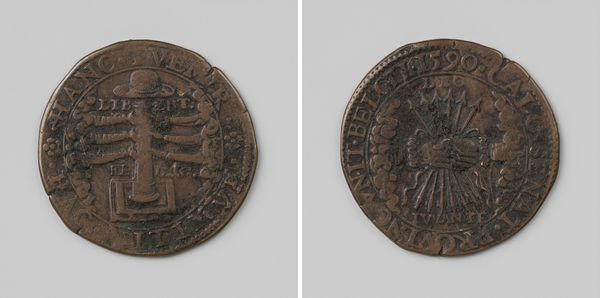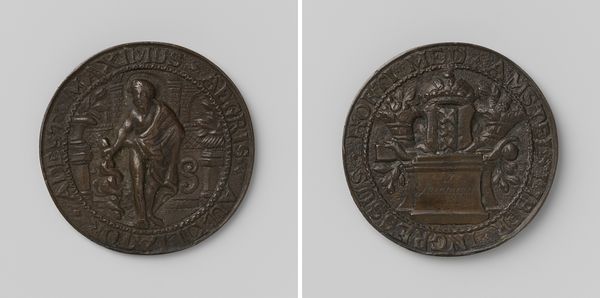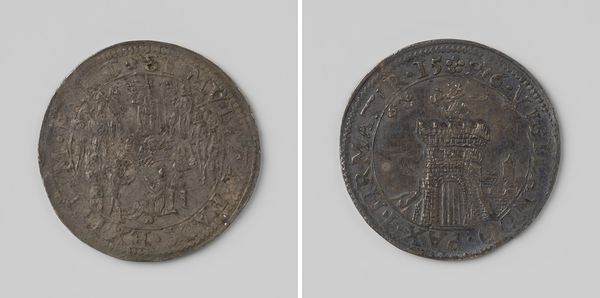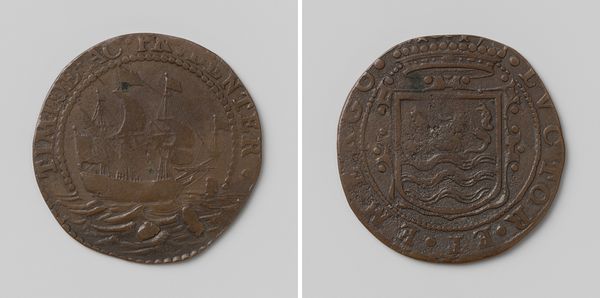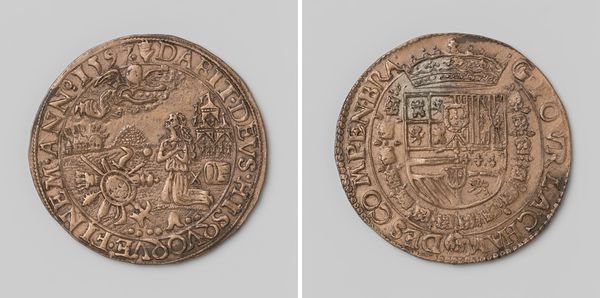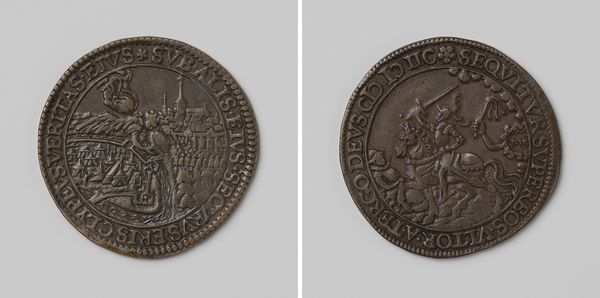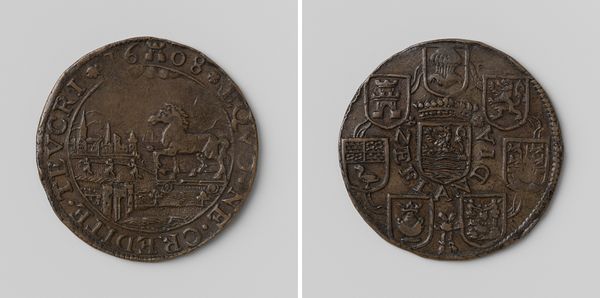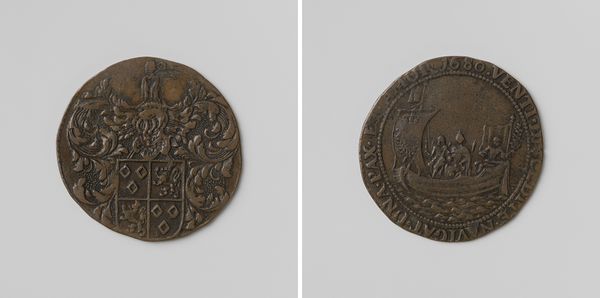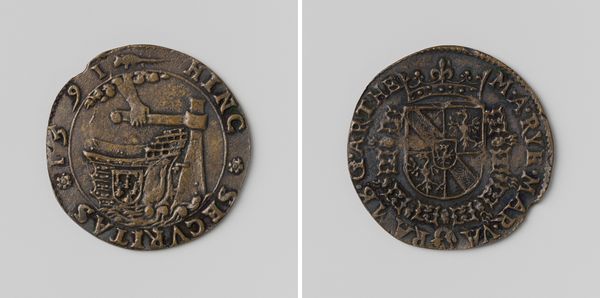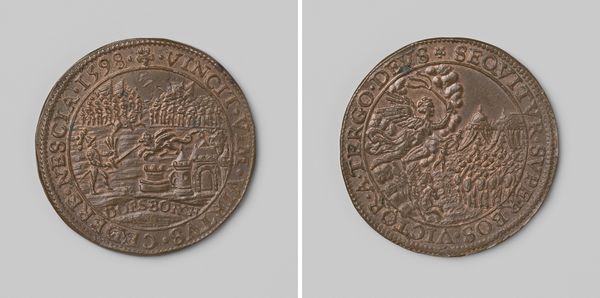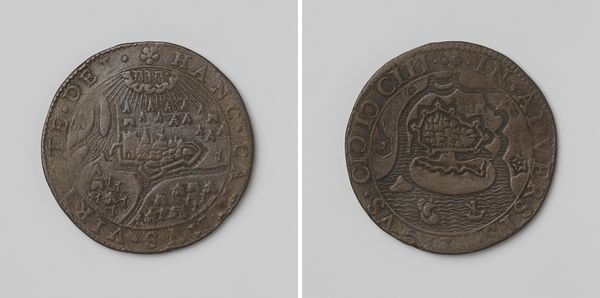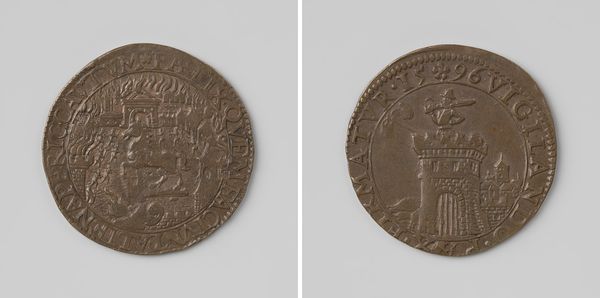
carving, metal, bronze, sculpture
#
portrait
#
carving
#
allegory
#
dutch-golden-age
#
metal
#
sculpture
#
bronze
#
sculpture
#
carved
Dimensions: diameter 3.1 cm, weight 6.99 gr
Copyright: Rijks Museum: Open Domain
Editor: Here we have "Staten van Zeeland," a bronze sculpture from 1656. It appears to be a coin or medallion, divided into two scenes, each with distinct imagery. One side shows what looks like a draped table with books, while the other presents a figure of Justice. How do you interpret this work, especially given the Dutch Golden Age context? Curator: This is a fascinating piece precisely because of its context. During the Dutch Golden Age, symbolism was carefully constructed to convey meaning to a wide audience. What symbols immediately strike you as significant here? Editor: Well, Justice with her sword and scales is obvious, a near-universal symbol. On the other side, I see books – perhaps laws? Curator: Indeed. Consider what Justice *means* in a Republic struggling for independence. She's not just blindfolded; her image here represents a very specific *type* of justice, connected to civic duty. Note how she faces outward, towards the people. The books, then, aren't just laws, but also knowledge and scripture—foundational elements for Zeeland’s identity and governance, rooted in Protestant values and civic virtue. The table becomes an altar to those ideals. Does that shift your understanding? Editor: Yes, definitely. So, the piece isn't just a portrait, but a layered statement about Zeeland's self-image? Curator: Exactly! Each element reinforces the other. The overall design promotes this region as a pillar of justice, prosperity, and faith. The visual program serves as an embodiment of the collective consciousness. We must continue to seek to find ways of connecting with symbolic meanings across cultures and through the ages. Editor: That’s incredibly insightful. I now appreciate how dense the symbolic language is. Curator: It shows how seemingly simple images can carry a lot of cultural weight when we consider the time and place in which they were made.
Comments
No comments
Be the first to comment and join the conversation on the ultimate creative platform.
